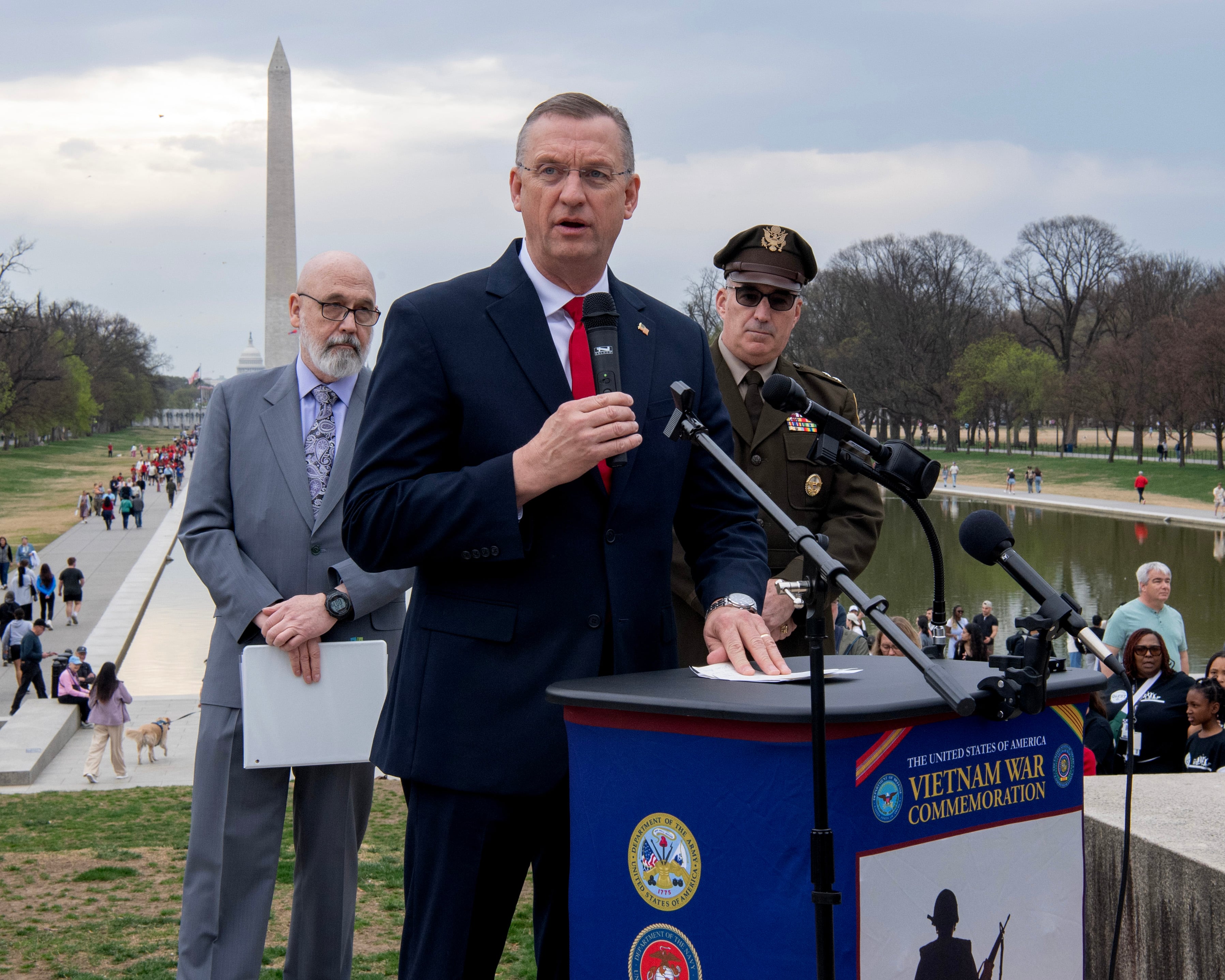WASHINGTON — The Air Force has laid out three potential plans for replacing the B-52’s engines, a key step for keeping its oldest bomber in service into the 2050s.
For almost two decades, the Air Force has studied whether and how to replace the B-52’s Pratt & Whitney TF33-PW-103 engines, eight of which have powered each Stratofortress since the 1960s.
Now the clock is counting down for the Air Force to make a decision, as age, obsolescence and diminishing sources for spare parts could make current engines unsustainable as early as 2030, according to slides presented at a Dec. 12 industry day.
The service appears to have settled on broad requirements for the engines.
First, it wants new — not refurbished — systems and intends to maintain an eight-engine configuration on each B-52, knocking out competitors who have floated a four-engine solution. The engines must be able to be integrated without having to significantly rework the B-52’s wings, although the service expects some design changes to structures such as struts and nacelles may be necessary.
Additionally, the service wants improved reliability and at least 20% greater fuel efficiency over the current TF33, while maintaining its takeoff performance and combat ceiling. It also is interested in a new power architecture that could support an increased number of power generators, as well as new digital engine control wiring, the document stated.
While the service has not solidified whether it will move onto a program of record, it has requested “initial seed money” in the 2018 budget and has done market research that could inform a final acquisition strategy. The service is considering three ways of procuring the engines.
RELATED

First, it could contract with the engine integrator, and have that company choose the engine . Another option is for the Air Force to award contracts to the engine integrator and engine manufacturer in parallel.
It could also move forward with a more complicated two-step plan, where the government would award a contract to an engine integrator and require the engine integrator to work together with potential engine providers on what the service calls an “engine integration approach.” Eventually, engine manufacturers would submit proposals based on that work, and the government would downselect to a single vendor.
After choosing an engine manufacturer and integrator, the Air Force could begin outfitting two B-52 test aircraft with engines as early as fiscal year 2022, according to a notional schedule. From there, it would acquire 74 more engines sets from FY2026 to 2034, enough to equip the entire inventory of 76 B-52s.
RELATED

Leasing options
Air Force Global Strike Command believes it will need to continue flying the Stratofortress as late as the 2050s, and the platform will be a key testbed for the service’s Long Range Standoff Weapon, a new air-launched cruise missile that can be outfitted with either a nuclear or conventional warhead.
Because the Air Force’s budget continues to be constricted, the service had considered using an alternative funding strategy, such as leasing, to procure new engines for the B-52. The service did not discuss potential paths forward during the industry day, but in a Dec. 2 interview with Defense News, Lt. Gen. Arnold Bunch, the service’s top uniformed acquisition official, said the service is still considering its options.
“We’re going to look at is there some kind of a lease that we can do. Do we want to continue to just buy? What are all those strategies we went to do and what’s the most economical way and most effective way to modernize to get the mission done?” he said.
Historically speaking, the Air Force has little experience using alternative funding agreements to procure aircraft engines, he added. “If we go down this path, it would be a new approach. it would be different.”
The industry day was attended by B-52 prime contractor Boeing, who will likely be vying for the systems integrator position. Also in attendance were the three engine primes most likely to compete for the contract — Pratt & Whitney, Rolls Royce and GE Aviation — and a number of other industry participants, including Northrop Grumman, United Technologies Corp. and Safran USA, which makes turbofan engines and engine components.
Pratt & Whitney has historically promoted an overhaul of its TF34 as a lower-cost alternative to new engines. However, the company could put forward a new engine if the service makes that a requirement, Matthew Bromberg, Pratt & Whitney’s military engines business, told Defense News in September.
Meanwhile, Rolls Royce has already tapped its BR725, a variant of the F130 that powers the E-11 and C-37 aircraft, as a potential offering.
Valerie Insinna is Defense News' air warfare reporter. She previously worked the Navy/congressional beats for Defense Daily, which followed almost three years as a staff writer for National Defense Magazine. Prior to that, she worked as an editorial assistant for the Tokyo Shimbun’s Washington bureau.




